Orson Welles made soooo many good movies. The Magnificent Ambersons. Othello. The Trial. F for Fake. Yet, outside of major film buffs, he’s pretty much only remembered for his very first feature film: Citizen Kane.
What a strange curse, to be remembered for your first film…when all of your subsequent films contain the life, style, and energy of your early years. It’s almost a curse to make a movie that great right out of the gate.
Unfortunately, John Singleton fell into that same boat. He was lauded when his directorial debut Boyz N the Hood hit theaters. After a paltry fourth-place opening weekend, the film’s praise from critics and awards-season buzz resulted in a $57 million finish. Because of that film—which observed urban America and black culture right when Rodney King was beaten by Los Angeles police—Singleton went on to become the youngest person and the first African American nominated for Best Director at the Academy Awards.
Twenty-eight years later, at the age of 51 on April 29, 2019, Singleton was removed from life support after suffering a stroke. One of Hollywood’s most overlooked directors died at Cedar-Sinai Medical Center in Los Angeles, leaving behind a legendary body of work that has largely gone unnoticed by most people.
And you know what the one film was that he really wanted you to see? Of all his films surveying the black experience in America, he wished more people had watched one of his worst-performing movies at the box office: the much forgotten Baby Boy.
And if you’ve seen Baby Boy, you…might be confused. You might think the movie is kinda wacky. You may see it as a very straightforward film. Many probably wonder if there’s anything more to evaluate outside of the characters and dialogue. How could this be the film John Singleton wants to be remembered by?
Because there’s a biting, unflinching critique of black men growing up in America deeply infused into the film’s mise-en-scene—practically every shot, every conversation, every character represents a much larger issue that Singleton had been concerned with since Boyz N the Hood. But much more than directorial debut, Baby Boy (which came out 10 years later) artistically illustrates the black experience in a manner that requires active viewing in order to fully comprehend. Singleton himself said the movie could require three or four viewings to “get it”.
And that’s where we can start to analyze Singleton’s stylistic choices. You can of course experience Jody’s journey through the film’s dialogue and powerful acting—but in order to fully grasp the excruciating weight the black man experiences in America, it helps to evaluate Singleton’s mise-en-scene throughout the film.
Here are a few key shots/motifs that provide some insight into this struggle and set us on the proper path towards experiencing the burden Singleton seeks to capture.
Motif #1: The womb
Baby Boy opens with a bizarre shot that lays the foundation for the entire film. Single starts with an experimental shot of our main character Jody (Tyrese Gibson) resting in his mother’s womb.

Through a voiceover, we hear Jody discuss Dr. Frances Cress Welsing’s theory on the effects of white supremacy on the development of black males:
“She has a theory about the black man in America. She says that because of the system of racism, the black man has been made to think of himself as a baby—a not yet fully formed being who has not realised his full potential. To support her claim, she offers the following: First, what does a black man call his woman? Momma. Second, what does a black man call his closest acquaintances? His boys. And finally, what does a black man call his place of residence? The crib.”
When interviewed by Blackfilm, Singleton elaborated on the film’s opening scene:
“This kind of infantilism is perpetuated by being raised within a racial, institutionalized society that basically has created these dysfunctional rites of passages for black men. They believe—it’s perpetuated in music and culture—to be a man you have to be a killer. What are they talking about? Killing each other. Or, they set the notion that you will do prison time. And that’s a mark of honor. Everything else is perpetuated toward that end. That path is just there in front of a lot of people.”
Now think about the tension Singleton was trying to create in that opening shot: Jody is fully grown, yet needs the kind of nourishment infants are provided with from their mothers.
That image extends to a much larger pressure black men face in America. The infantilism that plagues Jody isn’t literal—it’s a state of mind; it’s a situation Jody is born into. The black man’s pressure to display his masculinity creates a void where tenderness and altruism are not permitted, which is why Jody needs that kind of motherly attention to get by.
You can probably spot the debilitating pressure here: nobody can live that way. You can’t constantly fluctuate between hyper-masculinity and helplessness. Not only does this behavior tear at your psyche, but it burdens the people in your life. Your girlfriend doesn’t know whether you’ll make love to her or slap her. You could lead your boys down a vengeful path instead of a peaceful one. Your mother may think she’s done a great job at raising you…or completely failed.
Because a young black man believes “your have to be a killer,” life becomes a mishmash of stereotypes he’s forced to choose between—as opposed to forming his own identity.
The strain Jody experiences comes boiling to the surface just 10 minutes into the film, when Jody has a nightmare about being shot and leaving his loved ones behind. The weight of his untimely death results in Jody’s infantile setting being disrupted:
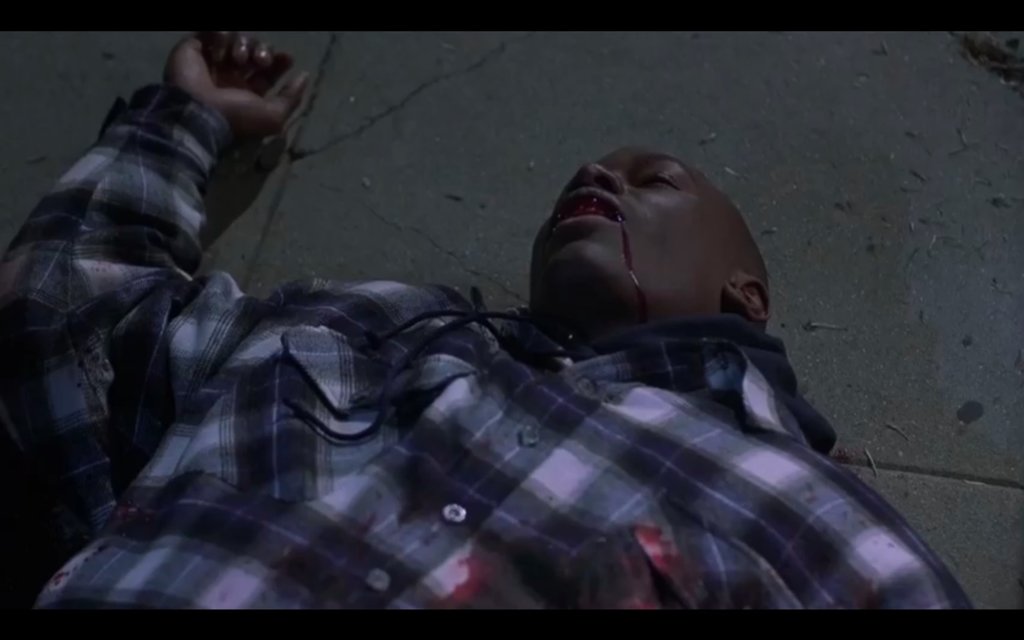
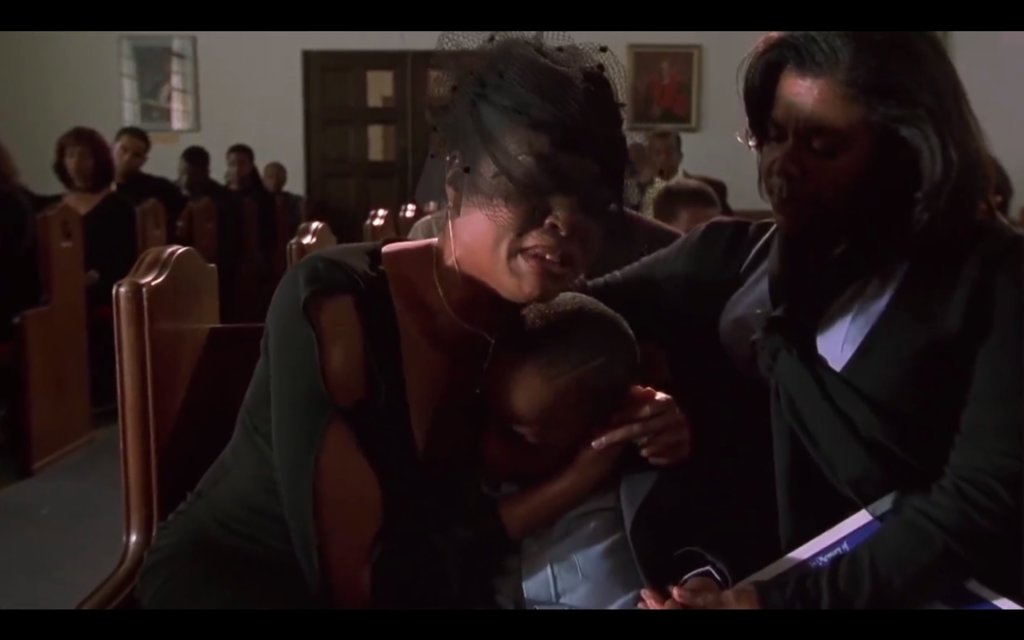
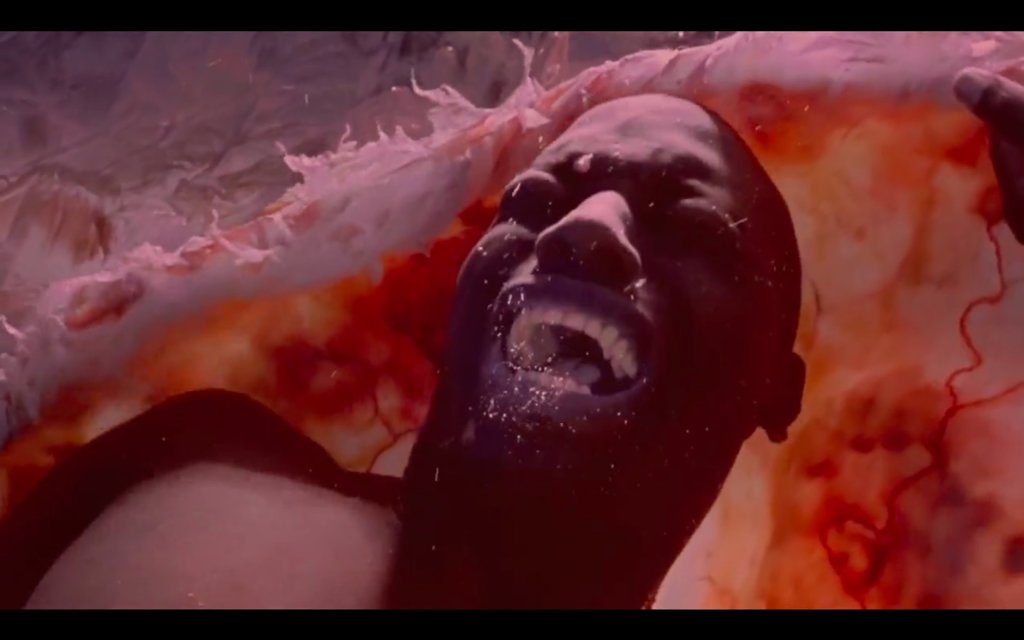
Given the film’s opening shot of Jody as a baby boy, there’s a striking juxtaposition here in how Jody goes from feeling safe to fearing for his life. It really highlights how Jody isn’t a baby, but is in fact a grown man that can’t rely on the comfort inherently provided at that age. The decisions he makes can not only end his life, but cripple his loved ones and set his own son down a dark path.
Motif #2: Tupac Shakur
In Jody’s childhood bedroom—where he still lives, by the way—his wall is coated with a portrait of Tupac Shakur.
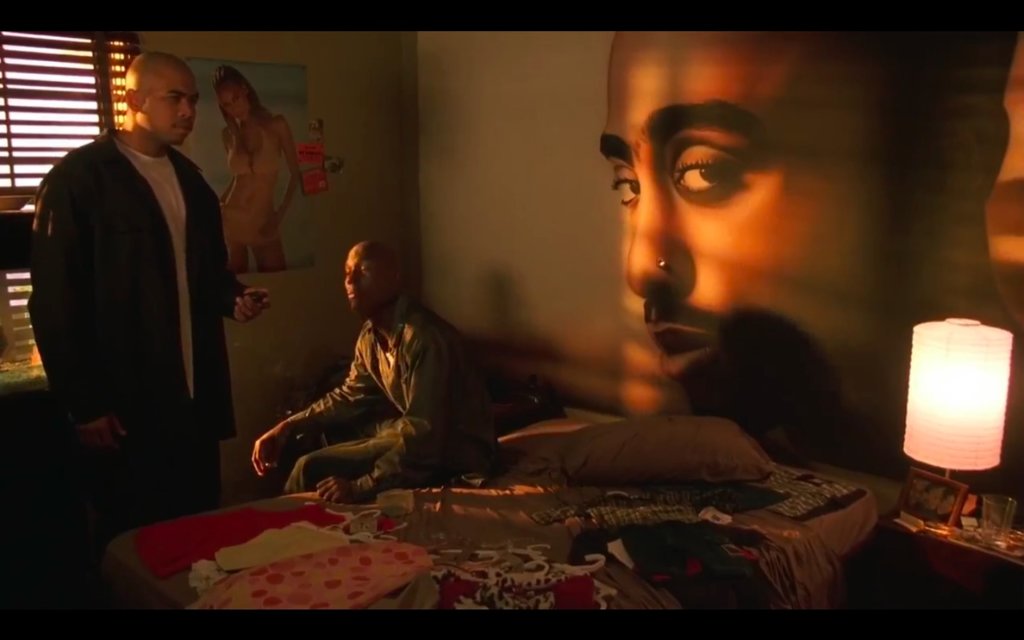
It’s a striking image at first glance—but the way Singleton uses Tupac throughout the film is what gives is power.
In that interview with Blackfilm, Singleton elaborated on the motif:
“If you took at the whole thing of having Tupac’s visage on the wall, it’s because Tupac was a baby boy. He didn’t know if he wanted to be a thug or a revolutionary. He had no mentorship, and the mentorships that he did end up having were very dangerous and led to his demise. Having his face on the wall adds to the whole emotional response that the audience has that Tupac’s past could possibly be Jody’s path. A lot of kids are with the themes of Jody being fearful of death and not wanting to leave the nest because he thinks he’s going to die—are all encompassing in the background and the foreground of the film.”
Suddenly, the image of Tupac goes from striking portrait to looming ghost. Tupac was killed before his prime, before he could fully form his identity. So the prospect of losing everything before you’re fully grown constantly haunts Jody in the very room he’s grown from a child into a man.
Even more compelling: Singleton originally wanted Tupac to star in this film. You can then view GIbson as a substitute figure occupying a vessel that belonged to Tupac. This fact combined with Tupac’s hovering presence highlights the preciousness and fragility of life.
And the image of Tupac only gains power as Singleton employs it throughout the film. Singleton also said in the interview with Blackfilm:
“Tupac’s eyes are like in The Great Gatsby the eyes of T. J. Eckleberg, looking down and just piece you. And there are a number of scenes in the film where basically that happens, and there’s a point for that.”
That constant reminder of how Tupac never bridged the gap between adolescence and adulthood accompanies various scenes with several different people in Jody’s life. From his girlfriend Yvette (Taraji P. Henson), whom he needs to be both a submissive woman and a comforting mother figure; to his other baby mama Peanut (Tamara LaSeon Bass), whom he needs to satisfy his sexual desires on command; to the lone father figure in his life Mel (Ving Rhames), who started his own life down the wrong path and now wishes to prevent Jody from making the same mistakes.
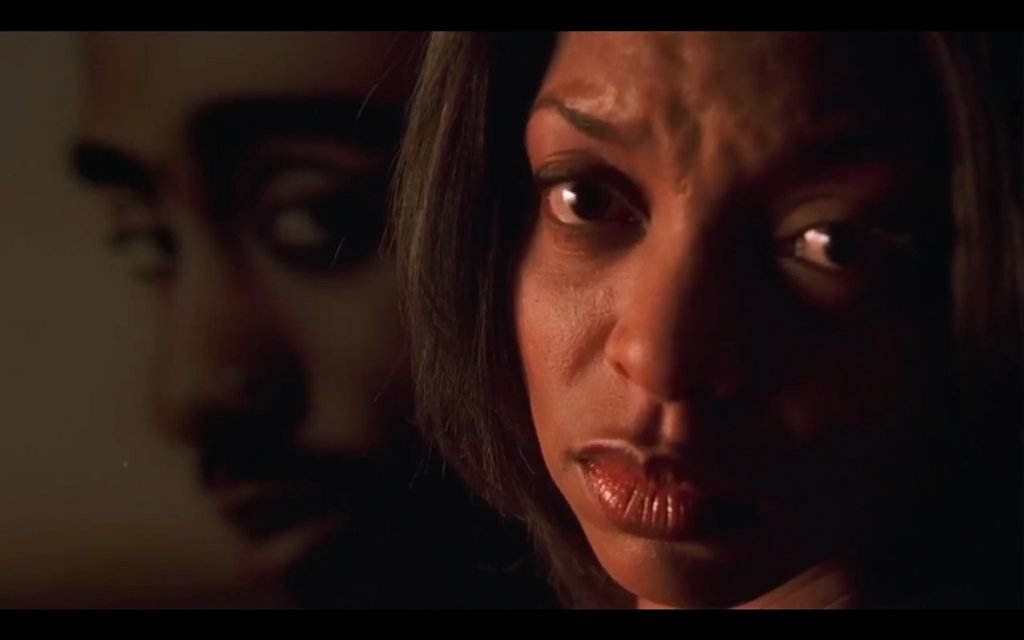
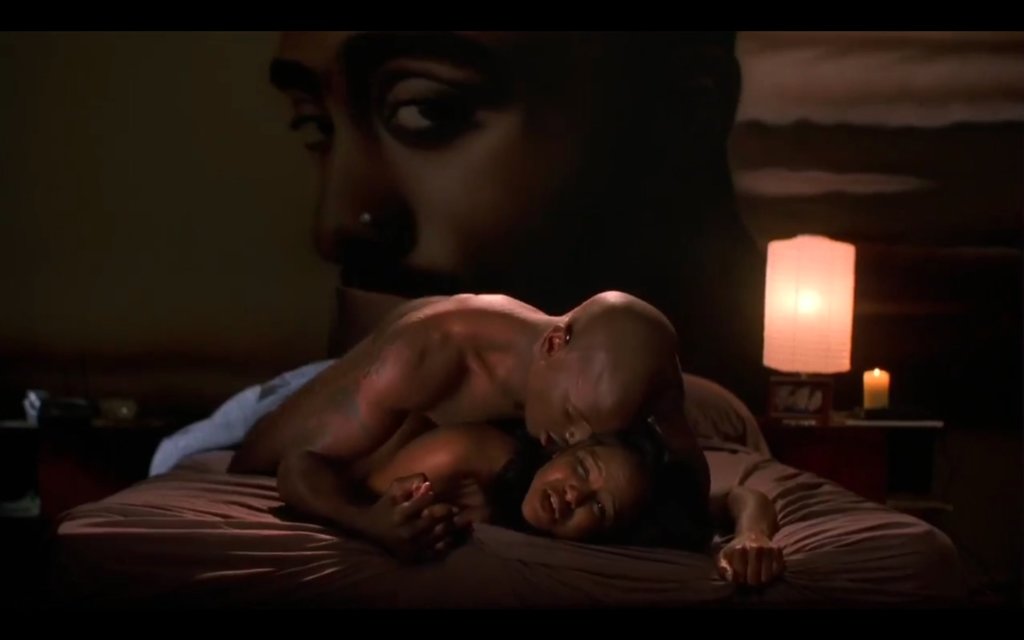
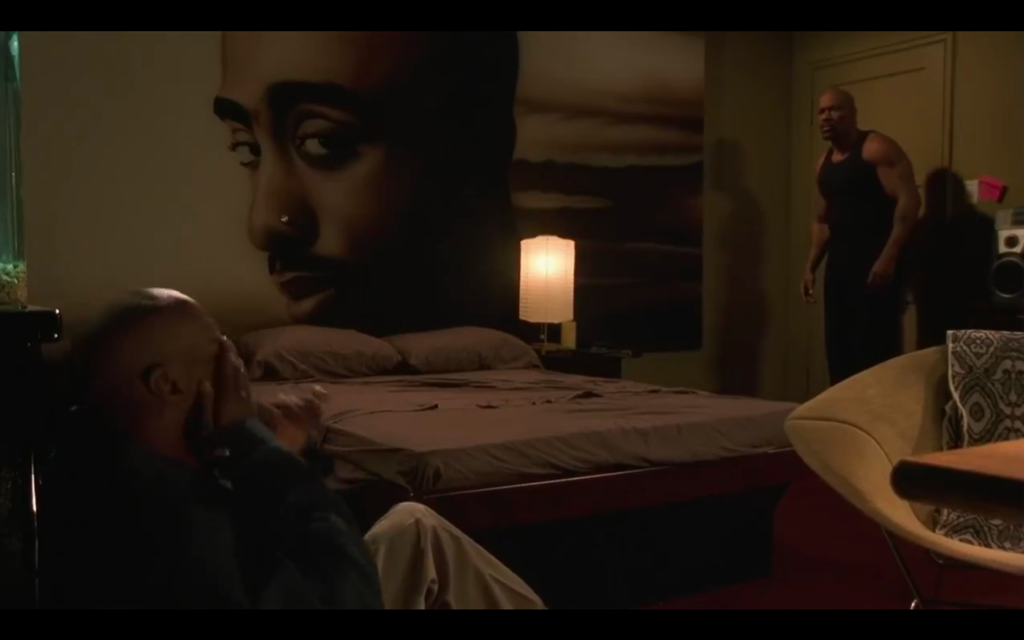
Motif #3: Jody’s changing childhood home
Funny thing is…we rarely see Jody in his childhood bedroom. Even though he lives at home, he always seems to be out and about. Because he feels pressure to exhibit power and ego, he routinely tries to establish himself as the master of whatever environment he’s part of—particularly Yvette’s apartment, where she lives with their son, Joe Joe.
But after losing Yvette, he’s forced to stay at home…where his mother (A.J. Johnson) is essentially trying to force him out.
The signals she consistently sends Jody couldn’t be more clear. She becomes obsessed with her garden, which becomes a symbol of the new life she’d like to build with Mel—a life that doesn’t include Jody.
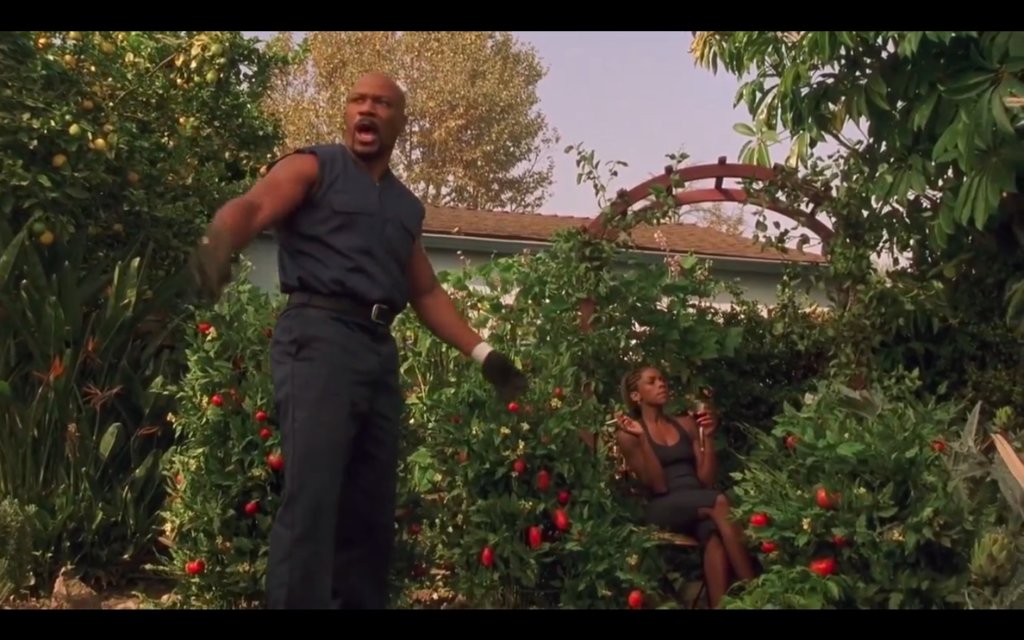
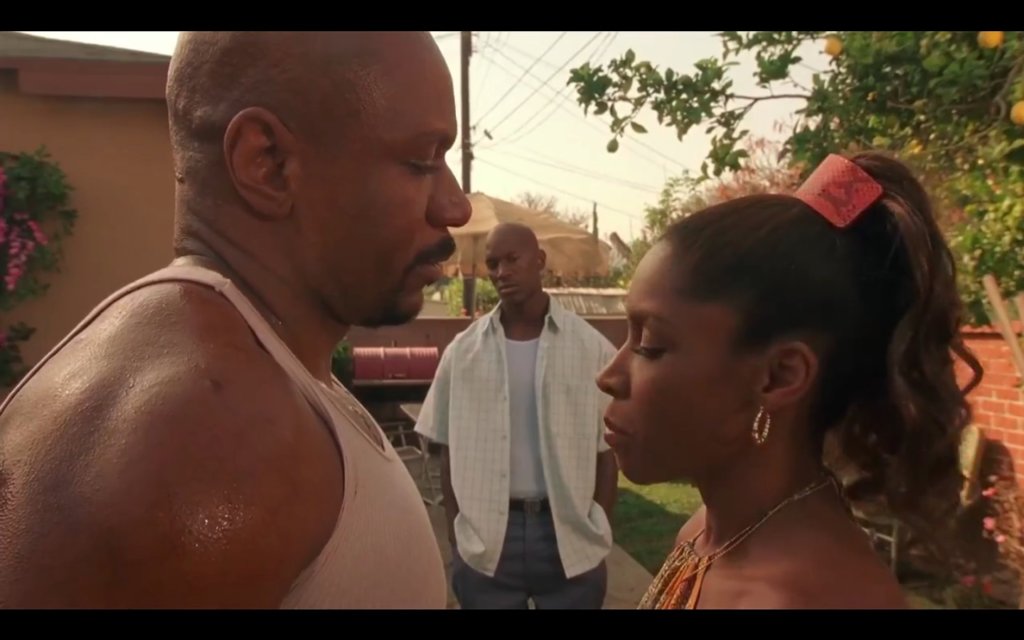
And inside the actual home, not only does Tupac continue to loom, but Mel constantly puts Jody in his place. Like when Mel sets up the television and explains how to use it like Jody is a child…
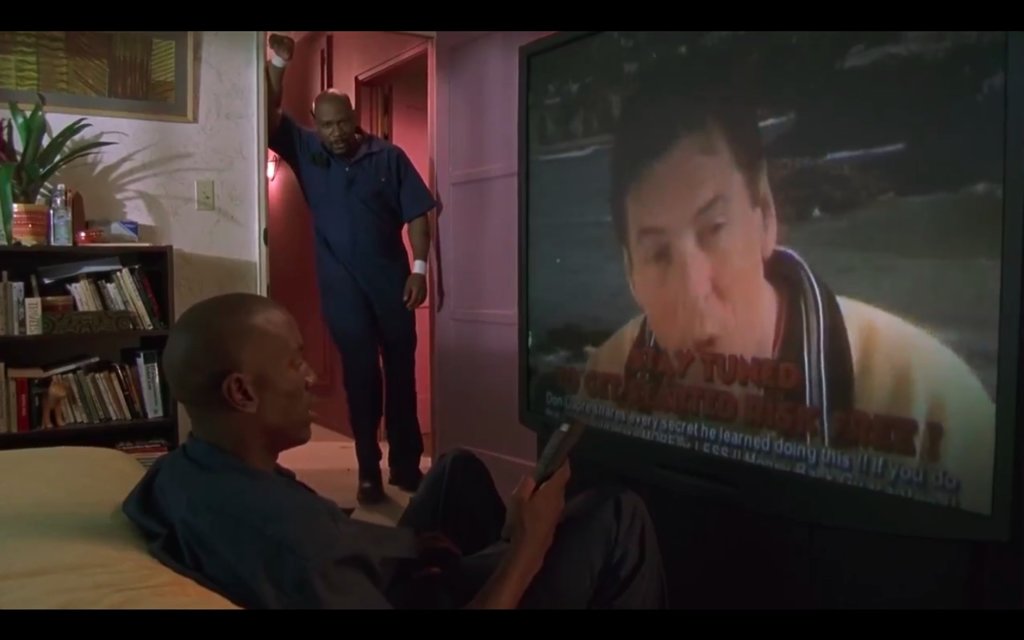
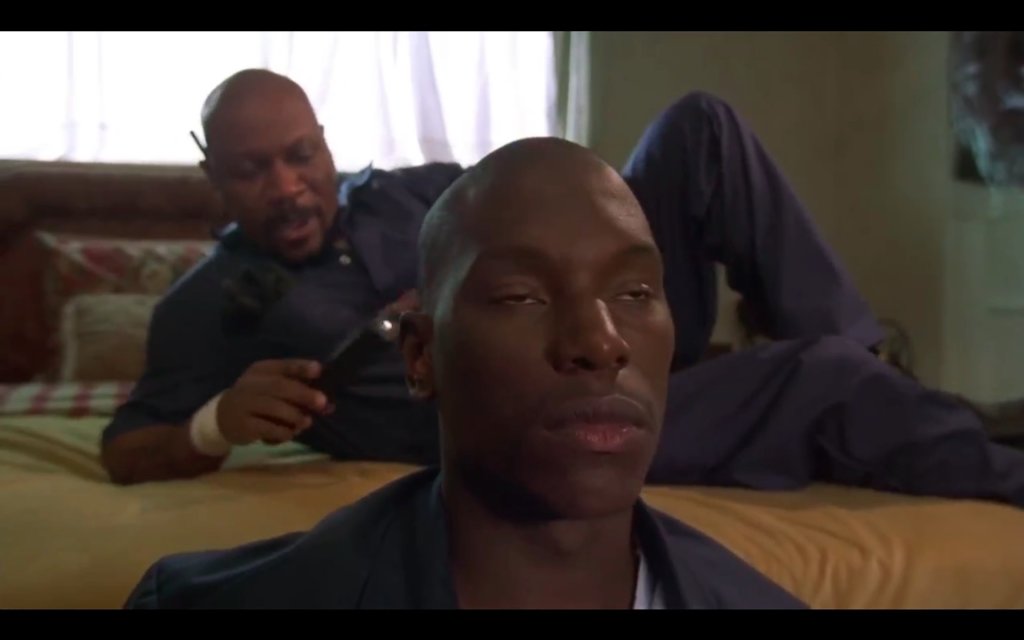

…or when Mel he puts a chokehold on Jody after Jody tries to establish himself as the man of the house.
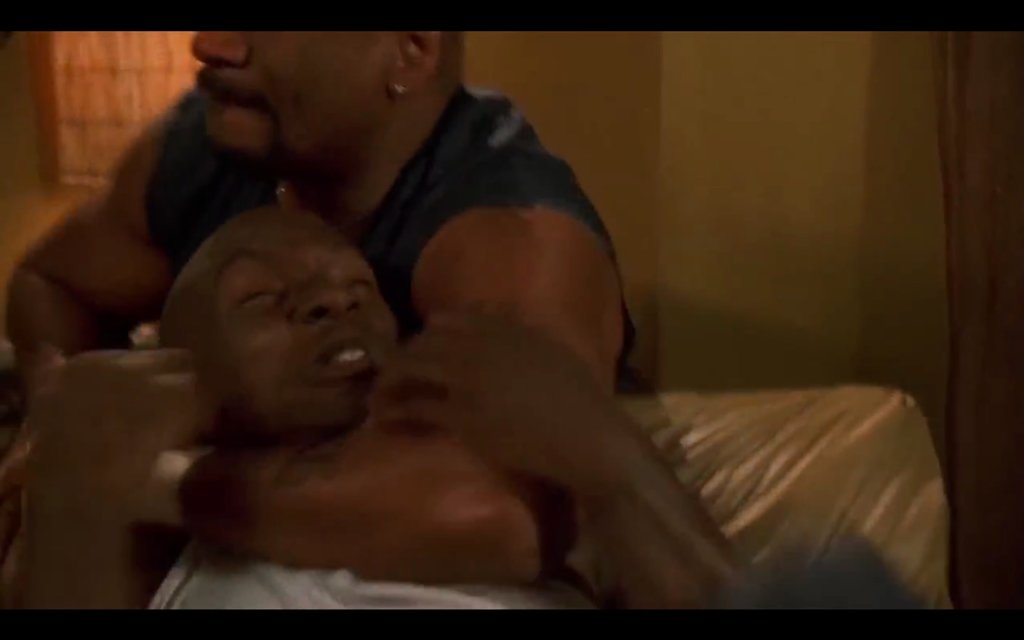
In both instances, you can sense the suffocation Jody must experience living with his mother. As a baby boy who both needs to be cared for and needs his ego satisfied, neither scenario is being fulfilled in his childhood home any longer. And because he’s too scared to start his life with Yvette, he is truly “homeless” in the same way he is “identity-less”.
Motif #4: Jody’s bicycle
Halfway through the movie, there’s a scene between Jody and his best friend Sweetpea (Omar Gooding). As Sweetpea talks about being baptized again, he shoos off a group of nearby kids who are riding their bikes.
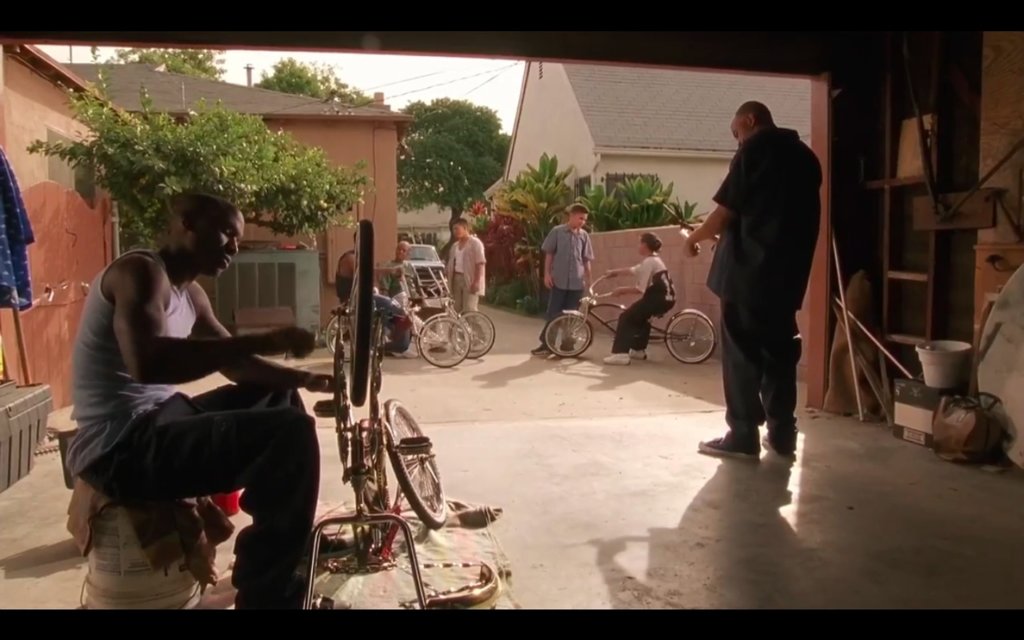
Sweetpea talks about his insecurities as a man, as he has no true passion in his life and has to constantly borrow money from his girlfriend and mother. He believes being baptized will give him a new beginning, a fresh start to find himself.
And as Jody listens, he works on his bicycle.
Sweetpea has just ushered out the youngsters, yet Jody—a baby boy—embodies the kids who aren’t allowed to be part of a grown-up conversation. The doubt and vulnerability Sweetpea displays mirrors Jody’s own insecurities. The only difference is that Sweetpea valiantly grasps onto his inflated ego, while Jody remains torn and tentative with his identity.

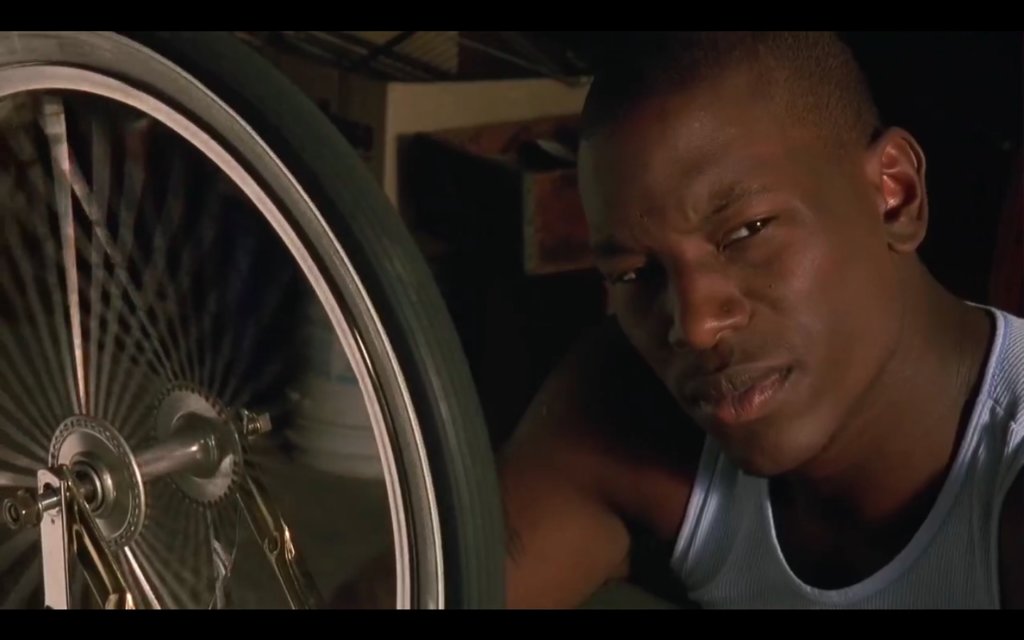
One of Jody’s pompous exploits is using Yvette’s car at will. Just like Yvette’s home, Jody views Yvette’s vehicle as something he owns, something he’s in charge of. But after losing Yvette, he loses the car as well, forcing him to ride his flamboyant bicycle that practically oozes adolescence.
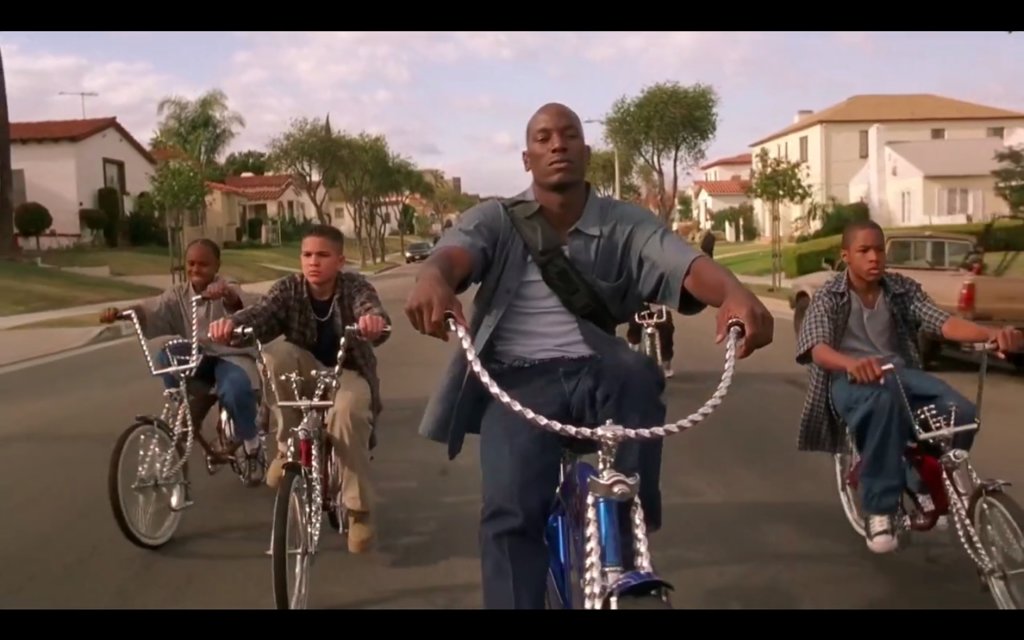
Once again, Jody is paired with children who have their entire lives ahead of them—which screams with irony. Jody is fully grown and belongs in a car, belongs in a home with his wife and child. Yet here he is, a mirror image of young black men.
Motif #5: Raising the youth
With all these images in mind, you’ll notice a running trend with Singleton’s mise-en-scene: the young black boy’s lack of direction. As both a man who can guide the youth and a baby boy in need of navigation himself, Jody constantly fluxes between those adolescent and adult stages.
And that fluctuation, unfortunately, is often powered by Jody’s pressure to display his dominance as a man. At one point, a group of teenagers beat up Jody and take his bike. With Sweetpea’s help, Jody takes revenge on the kids by lining them up, taking their money, and punching them one by one.
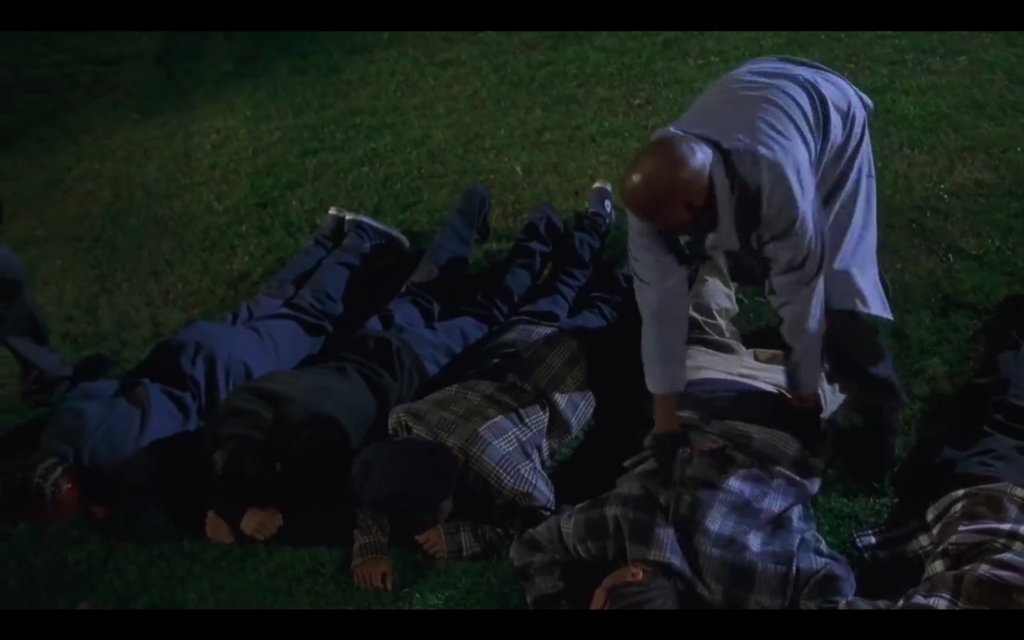
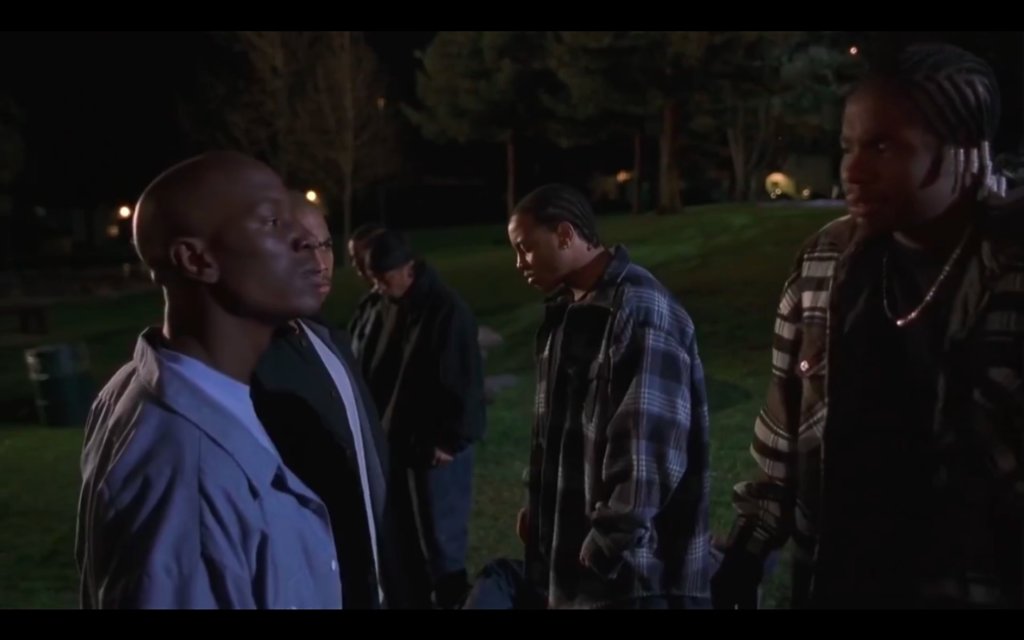
The more Jody feels the need to show off his ego, the sadder this scene becomes. These teens did a bad thing, but only because they feel the same pressure Jody feels to display his manhood. He has a chance to guide them here, but instead layers on the hate and self-pride, ultimately pushing these young men in a similar direction as they grow.
And you can sense Jody realizing this: a smile slowly fades from his face as Sweetpea beats one of the boys with a belt.
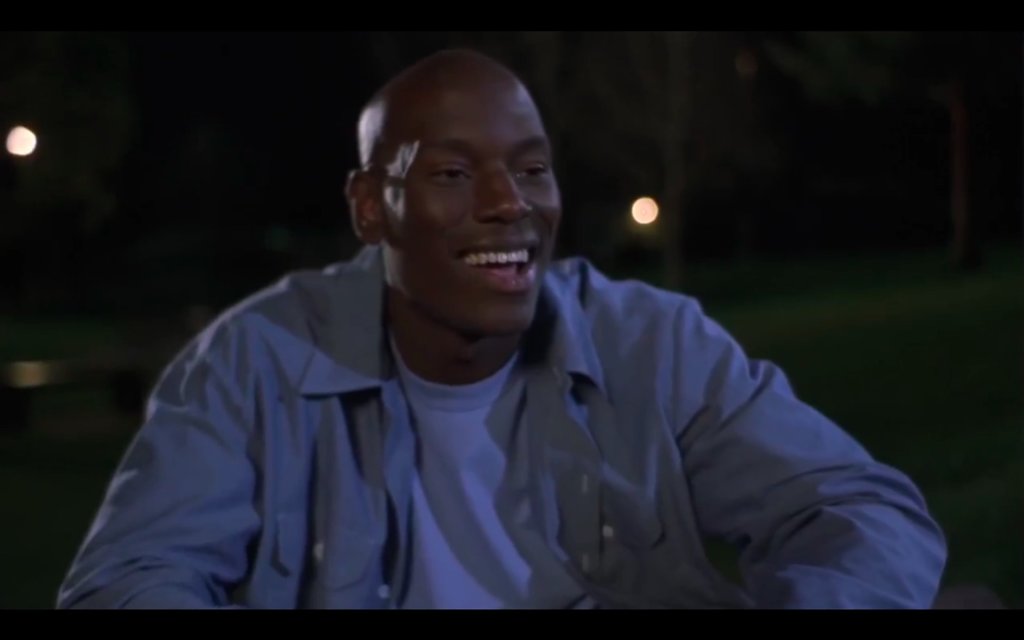

That inability to steer these kids in the right direction highlights the importance of positive role models in black boys’ lives. Singleton heavily signals this when juxtaposing Joe Joe with Jody. Both Jody and Joe Joe (who symbolically dresses exactly like Jody) share the commonality of new father figures in their lives. Jody has Mel, and Joe Joe has Rodney (Snoop Dogg).
Mel is the father Jody wishes to become, while Rodney inhabits the kind of father Jody grew up with. Both of those scenarios are captured by similar framed shots of Jody and Joe Joe sitting in front of their televisions.


To really hit the nail on the head, Rodney walks over and kicks Joe Joe’s fort of pillows, which symbolically recreates the safety black boys seek in their homes. Jody doesn’t realize that Mel is nothing like Rodney, and that if Jody learns from Mel, Jody can become a better father to his own son.
Baby Boy reaches a climax when Jody and Sweetpea shoot Rodney. Jody returns to his childhood bedroom, out of breath, carrying the gun with which he just committed murder. With the ghost of Tupac once again floating in the background, Mel’s fatherly comfort in this moment marks a turning point for Jody.

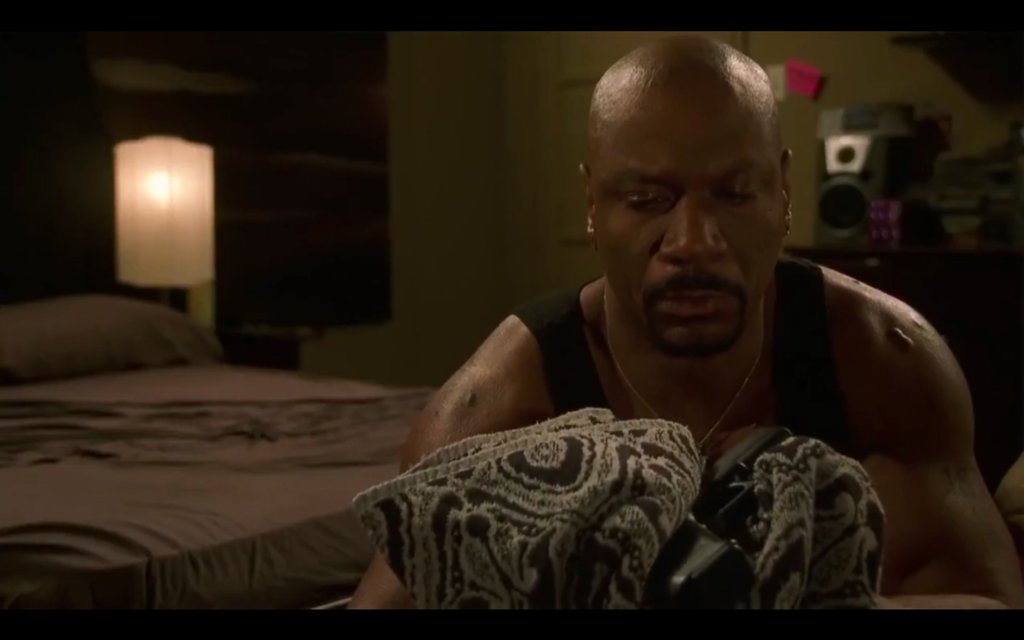
Mel doesn’t judge Jody, and understands black boys are trapped in a cyclical system when they’re young—and Jody knows he can become the man Mel has transformed into. Mel quite literally wipes the gun free of Jody’s fingerprints, freeing Jody from the pressure to demonstrate his power.
Jody’s future
With all of those motifs layered together, we sense a new beginning for Jody. He’s ready to move on from the womb—his mother’s home—to his new life.
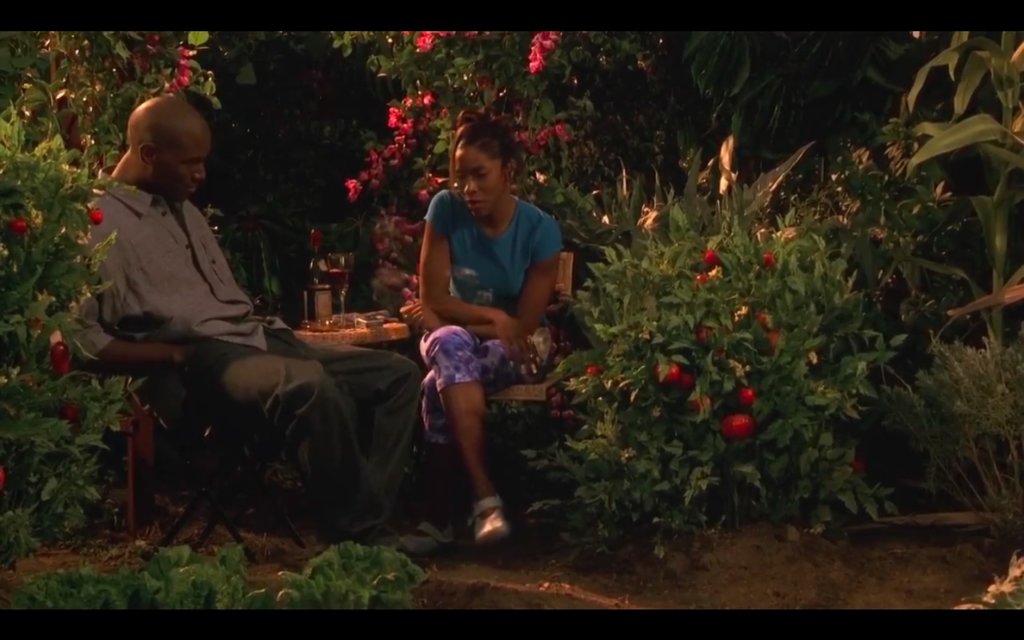

I find that final shot where Jody is cradled by Yvette so powerful. Just because Jody is finally moving on from being a baby boy…doesn’t mean that he doesn’t need comfort, that he’s not vulnerable, that he doesn’t require love in his life.
The ending signals that Jody must find balance. Be good to the people around you and allow them to help you grow and evolve. When you’re in that healthy state mentally—and when you’ve finally found your own identity—you can start to build the life you’ve always wanted.

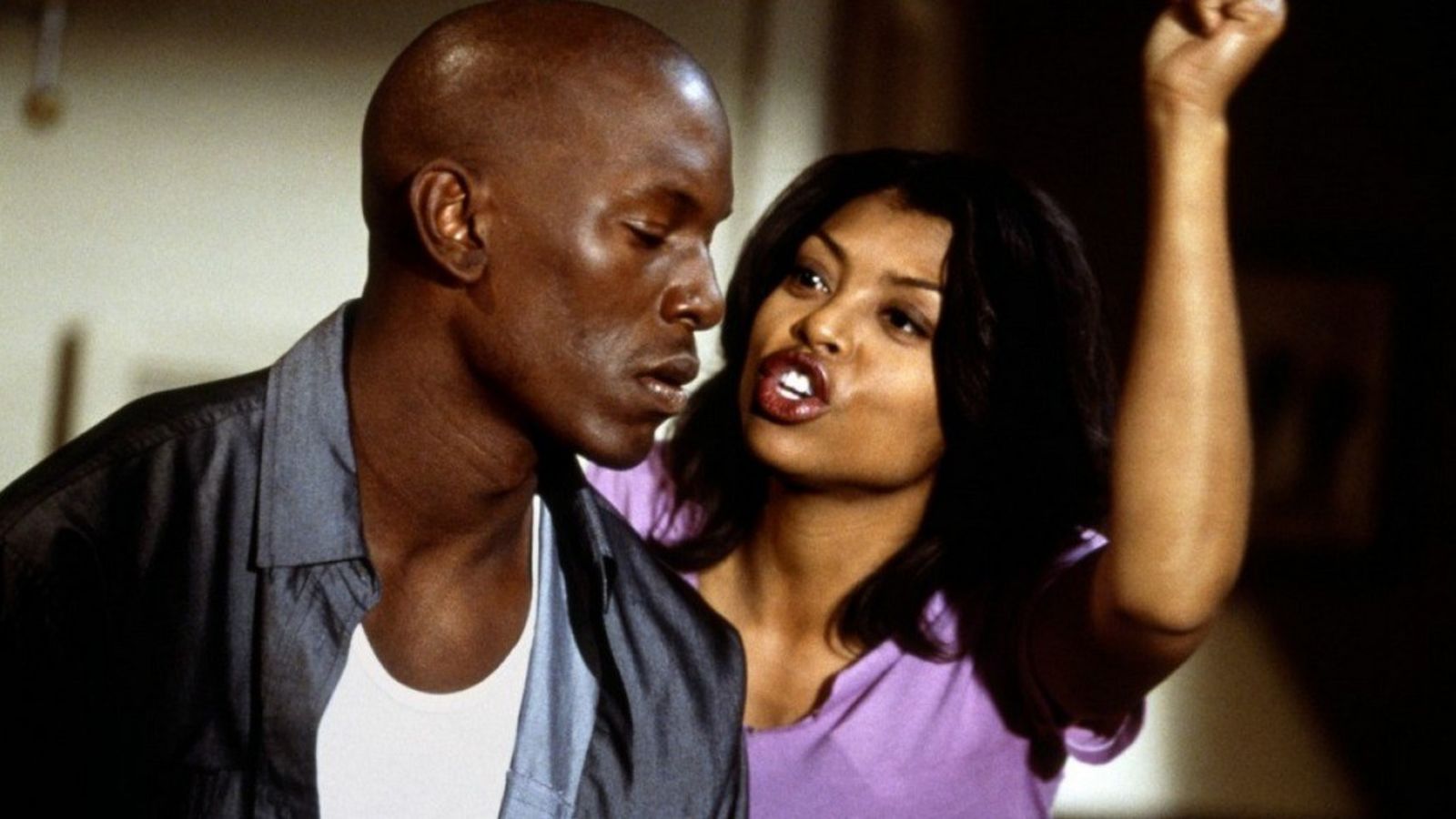
Powerful analysis! Well done
Thank you very much!
As a black male in his 20s who has seen this movie 3+ times, I have to say that you definitely hit the nail on the head with all of these points. Next time I see it I’m going to have even *more* understanding than I did before ^^
Glad to hear that! I know this is one Travis has always admired and was excited to write about.
I liked the way you put it out. I am in my 20s myself and trying to find a direction and grow. Thanks alot for putting the movie in to details because it is more understandable.